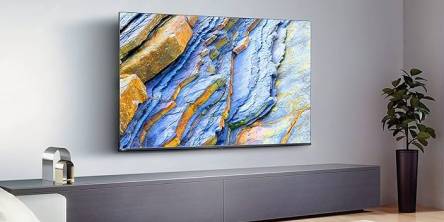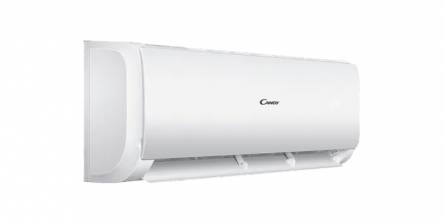Silicon in the Modern Era
Silicon, denoted by its chemical formula Si, is a semiconducting material made from silica. It was discovered by a Swedish chemist, Jons Jacob Berzelius in 1824.
Silicon element is available in abundant, making up 27.7% of the Earth’s crust. It is found in the form of oxides or silicates, such as flint, jasper, mica, sand, mica clay, asbestos, quartz, amethyst and granite. Silicon is a non-metallic element and gray in color.
One of the major characteristics of silicon is that it can be combined with many other elements in order to make useful products, starting from soap, shampoo, glass materials, medical implants and enamel to most notably semiconductors. Pure Silicon is used in producing ultra-pure silicon wafers, which is used in semiconductor industry, such as electronics and photovoltaic applications (like solar panels).
Silicon is widely used for integrated circuits (ICs). This is because it remains a semiconductor even at very high temperatures, which is very beneficial for processors, power supplies and motherboards, where the temperature is usually high.
A silicon wafer is a thin slice of silicon crystal, which is used in fabricating integrated circuits or similar devices. This wafer is the base substance for microelectronic devices built in and over water. To become functional, it undergoes through many micro fabrication processes. They are available in different sizes, depending upon the application of the water itself. For a wafer to function properly, it should have a uniform specification, without any deviation or error. Flatness, edge and bow are some of the other factors which should be uniform. Earlier, these wafers were hand crafted, but with the advent of technology, the new technological devices allow computer controlled devices to manipulate these silicon wafers.
A typical Integrated Circuit has hundreds or thousands of wafers and layers, placed efficiently to get the maximum efficiency from an electronic component. With the introduction of the nanotechnology, these wafers and layers have become microscopically tiny, thus taking very less physical space. The first computers use to take space of a room, but nowadays, they can easily fit into the palm of our hands. To make a device perform faster and efficiently, it requires a lot of electricity, a consequence of current material use. This is clearly not beneficial for small devices such as laptops, notebooks and phones, where the energy provided by the battery is much lower than a household plug.
It is very important that each and every wafer should be particle-free. Even if there is a single particle on a polished wafer, its functionality will be impacted. There are also different grades to classify wafers. Those which are greater than hundred and fifty millimeters are usually divided into process test and mechanical test varieties.
Manufacturing
The manufacturing process of silicon wafers is very complicated and tedious. A number of sequential processes are involved that are required to create an electronic circuit. As the demand for semiconductors continues to rise at a faster rate, the companies manufacturing the silicon wafers are finding it difficult to keep up with the demand.
Use of Silicon for Constructing Solar Panels
Though there are many materials available today to construct solar panels, silicon solar panel is the most reliable solar cell material. Moreover, it is most affordable to among other semiconductor materials. Even though the development of third-generation technology is occurring today, still the substances used for the first-generation models are being refined to make consumer solar panels perfect.
Pure crystalline silicon is never used in solar technology as silicon in pure form is a poor semiconductor of electricity. That’s why some impurities such as phosphorus are used to make it efficient in converting sunlight into electrical energy. Silicon ‘doped’ with phosphorus is termed as N-type silicon, whereas when ‘doped’ with boron, it is termed as P-type silicon.
Summing Up
The use of silicon in the modern era cannot be understated as it is being widely used in computers, mobile phones, televisions, satellites and solar panels. Moreover, Silicon Valley is named because of silicon’s amazing usefulness in the modern era.
Similar Articles
Discover why spring-loaded pogo pins are essential in modern electronics, offering reliable, durable connections that boost performance in diverse applications.
Smart TVs have revolutionized the way we consume entertainment. With advanced technology and diverse functionalities, they have become a staple in modern homes. Among the numerous options available, an Android smart TV stands out for its unique features and flexibility, offering an immersive viewing experience
When shopping for an amplifier for sale, it's important to understand what "budget-friendly" really means. A budget-friendly amplifier doesn't necessarily imply poor quality or limited features
Inverter air conditioners have gained significant popularity over the past few years due to their energy efficiency and superior performance compared to traditional air conditioners. However, with this rise in popularity, various myths and misconceptions have also emerged.
Discover 5 key ways industrial switches boost efficiency in automation, enhancing performance, reliability, and scalability in industrial environments.
In the age of interconnected devices and smart technology, the humble television has evolved from a mere entertainment appliance to a central hub within the modern home ecosystem. With the advent of smart LED TVs, homeowners now have the opportunity to seamlessly integrate entertainment, connectivity, and automation into their living spaces.
It is true to say that technology has transformed our lives in many positive ways and although there are people out there who think that technology is ruining society, in the vast majority of cases, only good things are happening. The introduction of the Internet has changed how we go about our daily lives, how we do our jobs and how we do our shopping
In today's fast-paced world, where the roads are more congested than ever, the significance of au
Extension cords are the type of items you are bound to find in any home or workplace.









